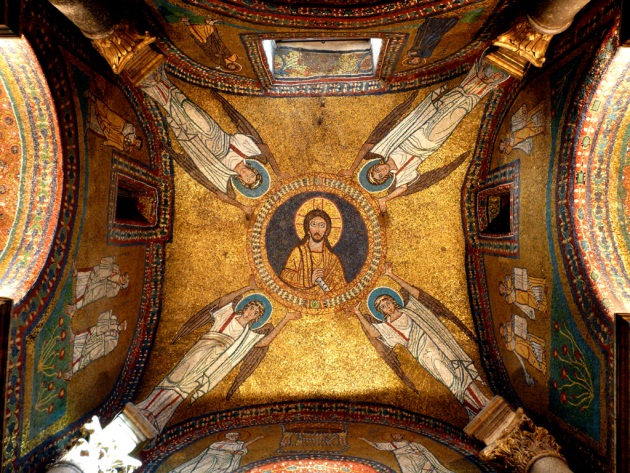
Located in the Rione Esquilino, the Basilica of Santa Prassede was built by Pasquale I in the ninth century and restored several times, over the centuries, altering its original feature.
The facade before the open atrium, preceded by the courtyard with the remains of the colonnade of the early Christian basilica, has columns of the ancient narthex and three arched windows above.
The interior was originally divided into three naves by sixteen granite columns directly supporting the entablature. Four of these were later incorporated into reinforcement pillars, on which are set three large transverse arches, decorated with frescoes with "Storie della Passione" ("Stories of the Passion"), figures of "Apostoli" ("Apostles") of the early seventeenth century.
In the middle of the floor a porphyry disk covers a well, where, according to legend, Saint Praxedes collected the remains and the blood of the martyrs.
Inspired by classical mausoleums, the Chapel of Saint Zenon is the most important Byzantine monument preserved in Rome, commissioned by Pasquale I as the monumental tomb of his mother Theodora. Inside there are splendid mosaics with figures of saints on the walls, and above all, on the vault, the figure of the Savior within a medallion.
Other mosaics from the time of Pasquale I are at the end of the main nave, on the triumphal arch and in the apse. The bust of Bishop Santoni, Bernini's first sculptural work, is in the church.
Information
For the timetable of the masses and visiting conditions, please consult the contacts.
 Condividi
Condividi
Location
To find out about all accessibility services, visit the Rome accessible section.











































